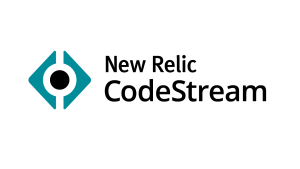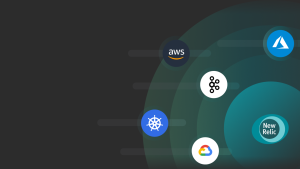At New Relic, our mission is to make observability a daily practice for millions of engineers. In the second half of 2021, we accelerated this mission by launching ten major product updates and countless other enhancements.
Check out our recap of the last six months in product updates, which help you troubleshoot, make data-driven engineering decisions, and embed observability throughout the entire development lifecycle:
- New Relic One core users
- New Relic CodeStream
- New Relic Instant Observability (I/O)
- Errors inbox integrated with Slack and Jira, available in the EU
- Model performance monitoring for ML
- An enhanced infrastructure monitoring experience
- OpenTelemetry protocol (OTLP) support
- TISAX and ISO 27001 compliance support
- HIPAA compliance support
- Applied intelligence for free for full platform users
New Relic One with core users: Starting at $49 per month
As of this month, we’ve officially released our new core user user type. It enables more developers to understand code performance better, collaborate and prioritize work directly from their IDE, and access relevant error details including stack traces, logs, alerts, and more.
New core users enable all developers to:
- Optimize code performance and feature planning with access to telemetry data from production and pre-production environments directly in their IDE via the New Relic CodeStream integration.
- Collaborate with DevOps, site reliability engineers (SREs), and ops engineers with a direct path from error tracking in New Relic One to the relevant code block directly in their IDE.
- Detect patterns and outliers in log data to resolve issues and improve code performance.
- Build and run custom applications in New Relic One to surface performance insights, optimize cloud costs, and more.
- Onboard new developers with observability best practices and shared baselines for metrics.
Compare our three enhanced user types for New Relic One:
More questions? Learn about how to get started with New Relic core users.
New Relic CodeStream: Plan, review, and debug code from your IDE
New Relic and CodeStream recently joined forces to supercharge your development environment with the tools needed to help you perform feedback requests, review code in context, debug in production, and collaborate with your team entirely inside your IDE. Through integrations with Jira, Trello, Asana, GitHub, GitLab, Azure DevOps, and other tools, you can browse outstanding tasks, update tickets, or create a new branch where you code. What’s more, with CodeStream’s New Relic One integration, you can jump from errors inbox in New Relic One straight into your development environment in one click. Then step through your stack trace for code-level debugging, or select a line of code and type a question or comment to collaborate with your teammates on the code in focus. And if you need to share and discuss your code, you can easily tag teammates and continue the conversation in Slack, Microsoft Teams, or email. No copy/paste required.
Watch an extended demo and learn more about CodeStream from founder and CEO Peter Pezaris and New Relic Product Manager Andrew Tunall in this video:
If you haven't already, sign up for a free New Relic account so that you can get the most out of New Relic CodeStream. A preview period through February 28, 2022, allows all existing users to access this functionality. Connect CodeStream to your New Relic account with your user key by installing the CodeStream quickstart and following the documentation.
Note: After the preview period, only full platform or core users can access the New Relic CodeStream integration, errors inbox, New Relic One custom apps, and advanced log management features.
New Relic Instant Observability (I/O): 400+ open source observability quickstarts
Today’s distributed environments are complex. Companies have increased their investments in a multitude of IT tools and services to meet specific business needs. As a result, many teams, already strapped for talent and resources, don’t have an accessible, time effective solution to observability for their business needs and for all experience levels.
But now you can instrument, monitor, and analyze your technology stack without the burden of manually setting up dozens of integrations, dashboards, or alerts with New Relic Instant Observability (I/O), your hub for ready-to-install quickstarts to extend New Relic to your unique environment in just a few clicks.
New Relic I/O is a rich, open source catalog of more than 400 quickstarts—pre-built bundles of integrations, dashboards, alert configurations, and guides—contributed by experts around the world, reviewed by New Relic, and ready for you to install in a few clicks so that you can get more insights from your telemetry data in minutes.
Alongside the quickstarts for popular cloud services, tools, and open standards, leading enterprise software partners, such as Kentik, Fastly, and Lacework, also contribute their own integrations and quickstarts to New Relic I/O. The latest cohort of partners have built quickstarts that span across CI/CD, Kubernetes testing, cloud security, and leading machine learning operations (MLOps) platforms, to name a few. If you’re interested in becoming a technology partner, request to join the partner network.
The best part is that New Relic Instant Observability is open source, so you can add to existing quickstarts or build your own. To learn how to install your first quickstart, read the Instant Observability blog or watch the New Relic I/O walk-through video.
Errors inbox: Integrated with Slack and Jira and live in the EU
Last year, we launched errors inbox, an error tracking solution that provides a single place to view, triage, and resolve errors across the full application stack before customer experiences are affected. To cut down on noise, it groups related errors into issues and provides detail down to the stack trace so you won’t need to leave New Relic One to troubleshoot. Collaborating is easy with shared comments visible across teams and error data that persists so even a resolved error can be reopened.
We've added several major updates:
- With the Jira integration, you can resolve errors fast get faster. Start tracking, managing, and updating tickets, while working and collaborating in the tools you know and love, without losing context. Follow the detailed instructions to learn how to integrate Jira with your errors inbox.
- Triaging APM errors is a breeze with errors inbox in the APM user interface in New Relic One. For streamlined root-cause analysis with logs, you can see logs in context within the error details. To help you investigate the root cause of an error, you can break down error groups by attribute, such as username or device used.
View all errors related to an APM service in one screen.
- You can also connect an errors inbox to Slack to send new and resurfaced error groups to a Slack channel within seconds of when they occur. You can connect an errors inbox to CodeStream to discover, troubleshoot, and diagnose production errors right within the IDE. Learn more about these integrations and how to triage errors in Integrate Slack and APM with errors inbox.
- Errors Inbox is now available to New Relic One users in the EU. Check out the docs to learn more about how you can proactively identify and fix issues before they impact your customers.
Model performance monitoring: Break down visibility silos for AI and ML teams
We extended the observability experience to provide a new offering for artificial intelligence (AI) and machine learning (ML) teams, breaking down visibility silos with model performance monitoring. AI/ML and DevOps teams and MLOps practitioners now have one place to monitor and visualize critical signals, such as recall, precision, and model accuracy, alongside their apps and infrastructure.
AI/ML engineers and data scientists can now send model performance telemetry data into New Relic One and use integrations to leading machine learning operations (MLOps) platforms to proactively monitor ML model issues in production. You can empower your data teams with full visibility, with custom dashboards and visualizations that can show you the performance of your ML investments in action.
With quickstarts for leading MLOps providers, it’s easy to get complete visibility into ML-powered applications. Learn more about the companies and their quickstart observability for ML model monitoring. Build your own ML integration and bring your ML model data from any source to gain trust and insights for better, more accurate ML models.
Quickstarts include dashboards so MLOps practitioners can track the performance of ML models and visualize critical signals in an ever changing world where inaccurate predictions can cost millions of dollars.
For more information on how to set up New Relic One model performance monitoring or integrate ML model performance in your observability infrastructure, see our MLOps docs.
Infrastructure monitoring: Pinpoint issues and quantify blast radius with a new experience
We enhanced our infrastructure monitoring experience to help DevOps, SRE, and IT Operations teams quickly pinpoint offending infrastructure components, determine incident blast radius, and identify the root cause of errors.
The new infrastructure monitoring experience makes it easy to find possible issues.
We strengthened our commitment to providing real-time troubleshooting workflows and incorporated broader platform context and unique topology visualizations into our user experience. You can navigate multiple infrastructure entities on a single screen to isolate bottlenecks by filtering and sorting based on golden signal conditions. Select multiple items to compare their metrics for golden signals, and understand how infrastructure behavior relates to applications and other connected architecture.
Quantify blast radius by using automap to discover the impact of an incident by visualizing the upstream and downstream dependencies that affect your services. Analyze historical telemetry using timewarp to view when incidents occurred and associated health changes by going backward and forward in time.
This screen shot shows how you can use automap to display topology maps to troubleshoot incidents and use timewarp to find where and when the issue occurred.
Check out our reimagined infrastructure monitoring experience and tell us what you think.
Export your telemetry data to New Relic One using native OpenTelemetry protocol (OTLP) support
In 2020, we announced our commitment to open source instrumentation by open sourcing our agents and standardizing our observability offerings on OpenTelemetry.
We are continuously enhancing our support for OpenTelemetry and last September, we announced the general availability of our native support for OpenTelemetry protocol (OTLP) and OpenTelemetry. This includes GA support for trace data and early access support for metrics and logs with our OTLP ingest capability.
With New Relic’s native OTLP support and curated user experiences, you can use this new standard of instrumentation to get visibility into your entire system to quickly discover the data you need to discover the root cause, and optimize the performance of your applications and services.
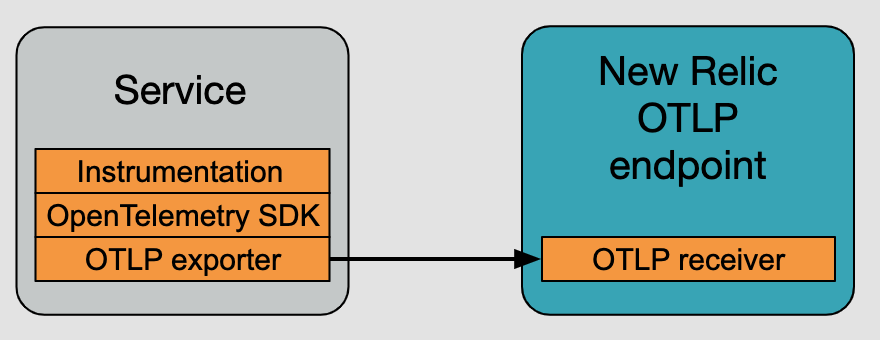
You can also combine New Relic’s cost-effective and high-performance observability tools with Amazon Web Services (AWS) Distro for OpenTelemetry to provide a powerful observability solution for your AWS workloads and infrastructure.
This summary view shows golden signal metrics for an AWS workload instrumented with OpenTelemetry.
Follow the instructions in our OpenTelemetry documentation or head to GitHub to get started.
Secure your observability data with TISAX and ISO 27001 compliance
You shouldn’t have to worry about compliance while instrumenting your stack. That’s why our New Relic One observability platform is TISAX- and ISO 27001-certified.
Building on our support for FedRAMP, SOC2, GDPR, CSA STAR, and DHS, our TISAX, and ISO 27001 certifications mean you can confidently monitor your application, infrastructure, and network performance—all while helping you maintaining your compliance and protecting your customers' data. New Relic One helps you follow industry best practices for security and governance and optimize relationships amongst suppliers, partners, and original equipment manufacturers (OEMs) while safeguarding data.
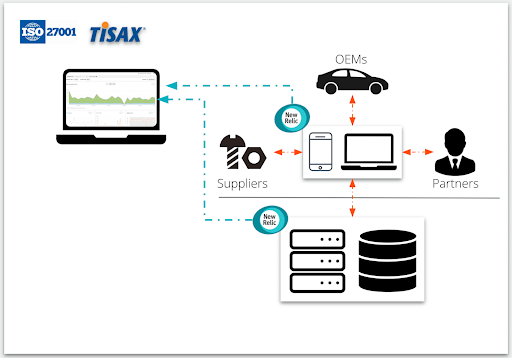
Protect patient data with the first cloud-based HIPAA-compliant observability platform for all telemetry data
As healthcare and life sciences organizations work to digitize their operations and health information, we also know they must also meet HIPAA regulations, which dictate how patient information can be collected and stored. That’s why we worked to make New Relic One a HIPAA-compliant observability platform for healthcare industry systems containing Protected Health Information (PHI). This change makes us the first cloud-based HIPAA-compliant observability platform for all telemetry data—including metrics, events, logs, and traces—across the full stack. We are now signing Business Associate Agreements (BAAs). Learn more at HIPAA enablement - what you need to know and do, and reach out to your account representative to get started. Head to our documentation to learn more about all of New Relic’s certifications, standards, regulations.
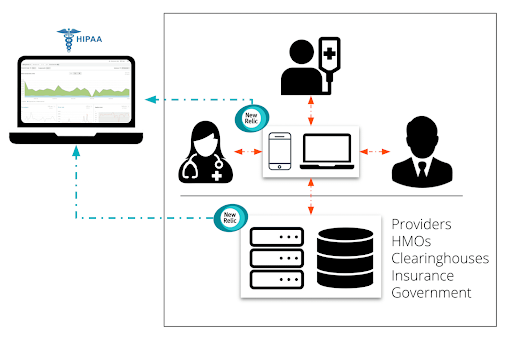
AIOps: Every full platform user can now achieve faster time-to-resolution and reduced noise at no additional cost
Throughout 2021, we embedded applied intelligence throughout New Relic One to make it easier for you to detect anomalies instantly, reduce alert noise, and see the root cause of issues when incidents occur.
Recently, we redesigned the Alerts & AI tab experience with advanced features and a new navigation menu. For example, workflows give you the ability to control when and where you receive incoming alerts about issues. Then you can route incidents with specific characteristics to the appropriate teams with specific ticketing or notification tools, such as ServiceNow and Jira. You can also use custom webhooks to integrate other services. For a demo of these changes, watch a video about destinations and workflows.
Here's a quick look at configuring your workflow to control when and where you receive alerts:
You can select Destinations in the left hand navigation menu to add and manage where you send notifications about your New Relic One data, using integrations for Jira, ServiceNow, Slack, webhooks, and email. Future integrations with additional partners are underway.
Finally, enrichment gives you the flexibility to query data in NRDB, collect pertinent related information, and use predefined parameters so you can automatically add additional context to your alerts before they are sent to first responders.
Next steps
Interested in seeing all this powerful observability innovation for yourself? If you don't already have an account, sign up for a free New Relic account today to get started. You get 100 GB/month of free data ingest, one free full-access user, and unlimited free basic users.
The views expressed on this blog are those of the author and do not necessarily reflect the views of New Relic. Any solutions offered by the author are environment-specific and not part of the commercial solutions or support offered by New Relic. Please join us exclusively at the Explorers Hub (discuss.newrelic.com) for questions and support related to this blog post. This blog may contain links to content on third-party sites. By providing such links, New Relic does not adopt, guarantee, approve or endorse the information, views or products available on such sites.

